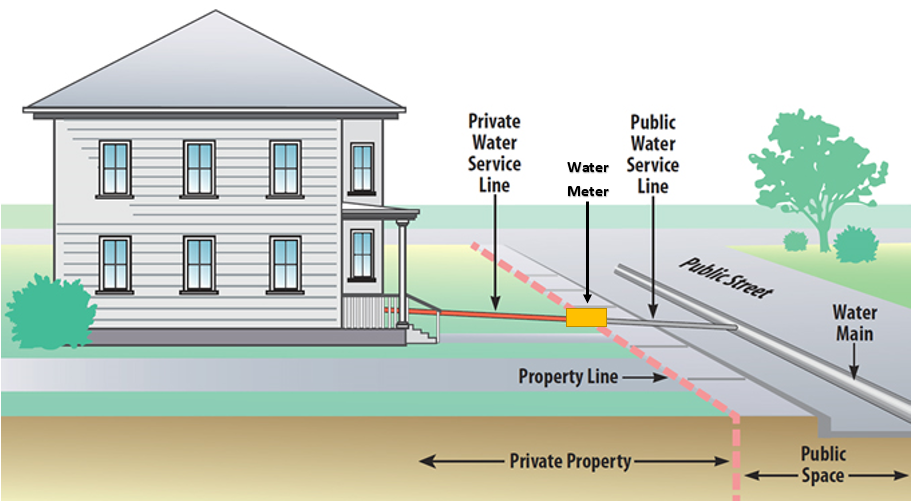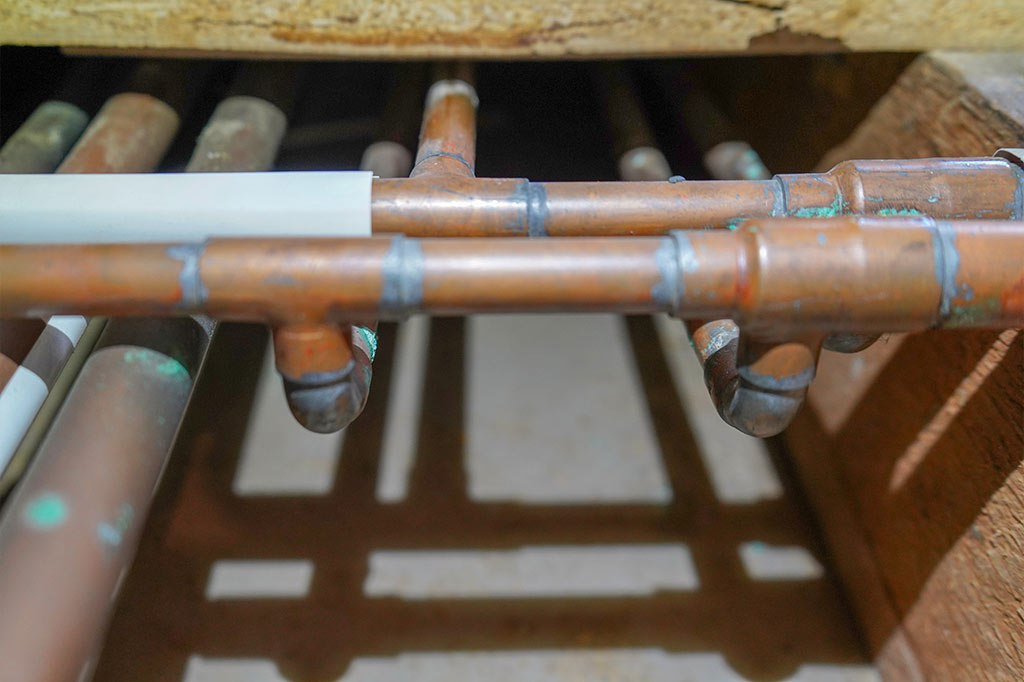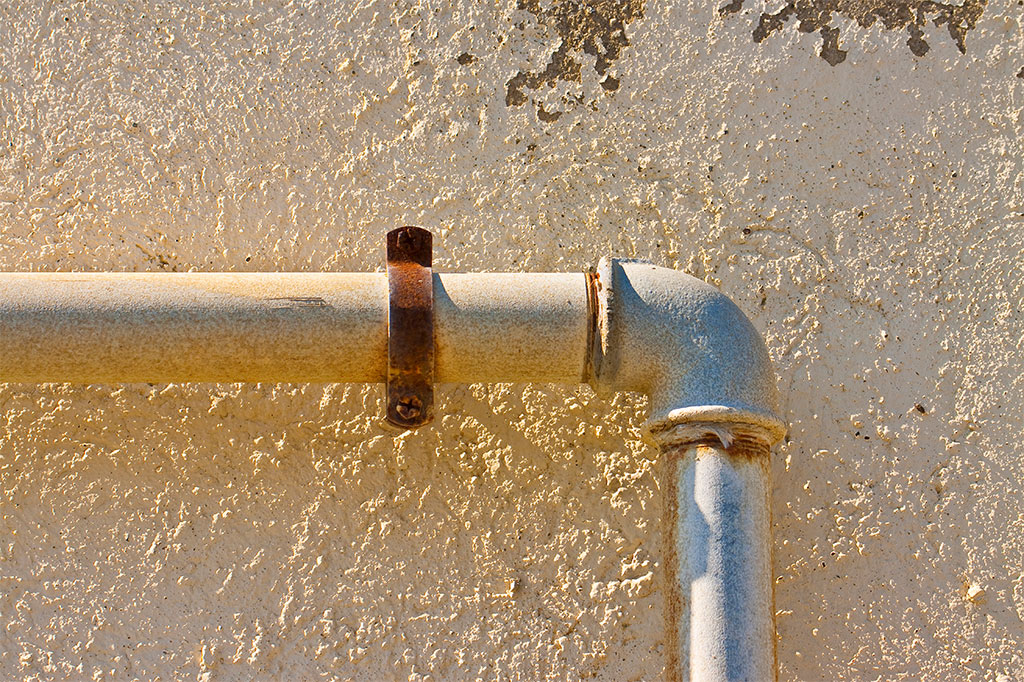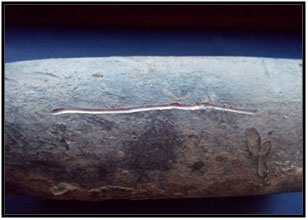If present, elevated levels of lead can cause serious health problems, especially for pregnant women and young children. Lead in drinking water is primarily from materials and components associated with service lines and home plumbing. Information on lead in drinking water, testing methods, and steps you can take to minimize exposure is available from the Safe Drinking Water hotline at (800) 426-4791 or at www.epa.gov/safewater/lead. If your home was built before 1990, it’s a possibility some of your service lines or indoor plumbing could contain lead pipes.
Do you have lead pipes?
What is a service line?
Service lines carry water from the main water line (usually in the Right-of-Way) to your home. Part of the service line is the utility’s responsibility and part of the service line is located on private property. The new guidance from the EPA is interested in knowing not just what the utility has in the ground but also what is on the homeowner’s side of the meter. The EPA is requiring all water utilities to work with property owners whose homes were built before 1990 to determine the material type on the private side of the service line.


Finding your meter
Your water meter is usually located near the property line close to the road or sidewalk. You may see meters clustered together near the end of a shared driveway or private road. The location of the meter can help determine where the water line enters your home. It is most likely the shortest path from the meter. If you know the entry point location, you can skip locating the meter and go directly to this location to look at the pipe material.
Service line material
Is the service line pipe metal or plastic?
If it’s plastic, please go to our online survey form and let us know.
If it’s metal, we still have some work to do.
Does the metal look like a shiny penny or silver\gray when wiped or scratched with a key or coin? If it’s like a penny, the service line is copper. Please go to our online survey form and let us know.


If the line is silver or gray, grab a magnet and see if the magnet sticks to it. If the magnet sticks, you likely have galvanized pipes.
If the magnet doesn’t stick, you may have lead pipes. Please report your findings to our office through our online survey.

